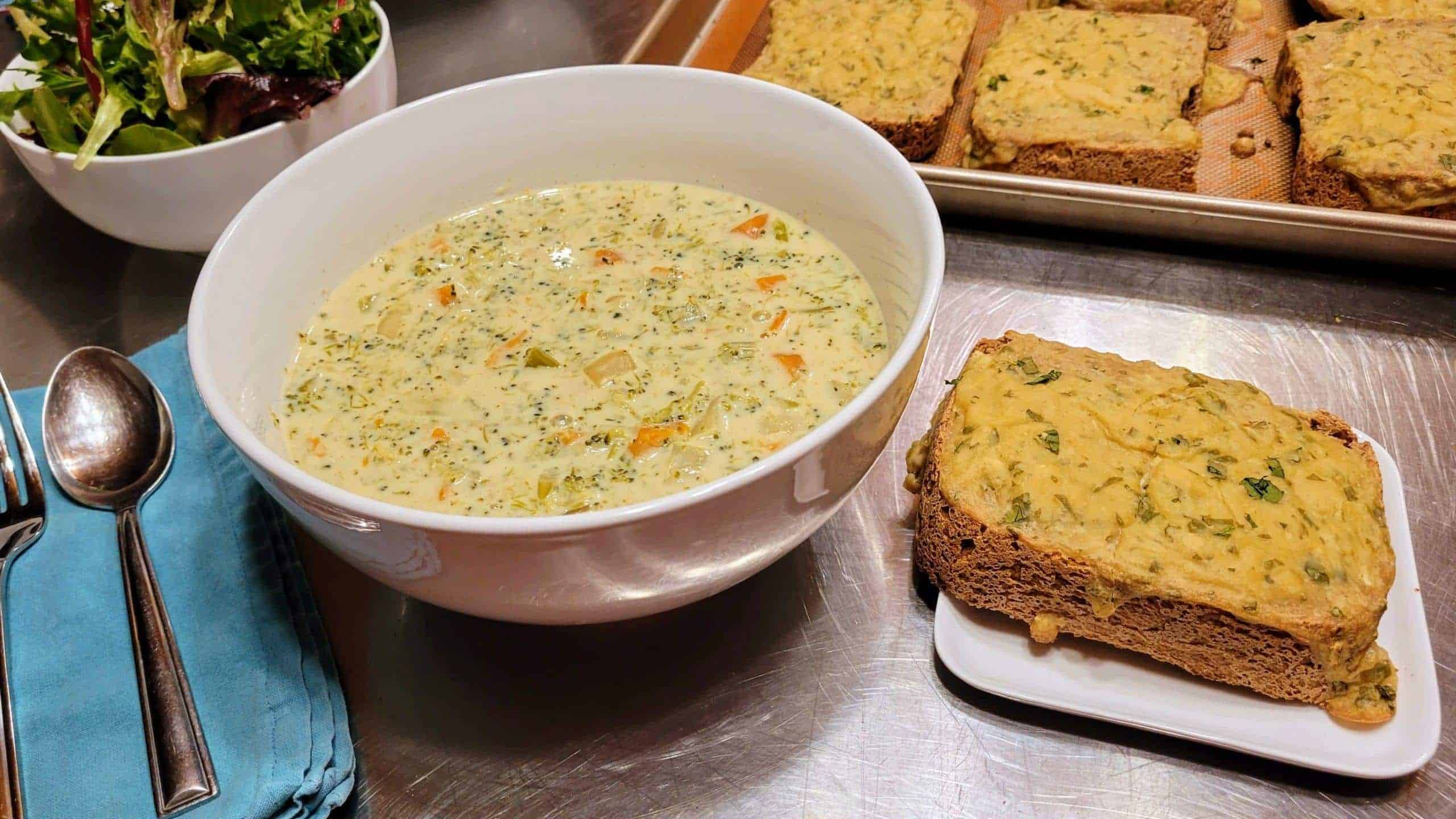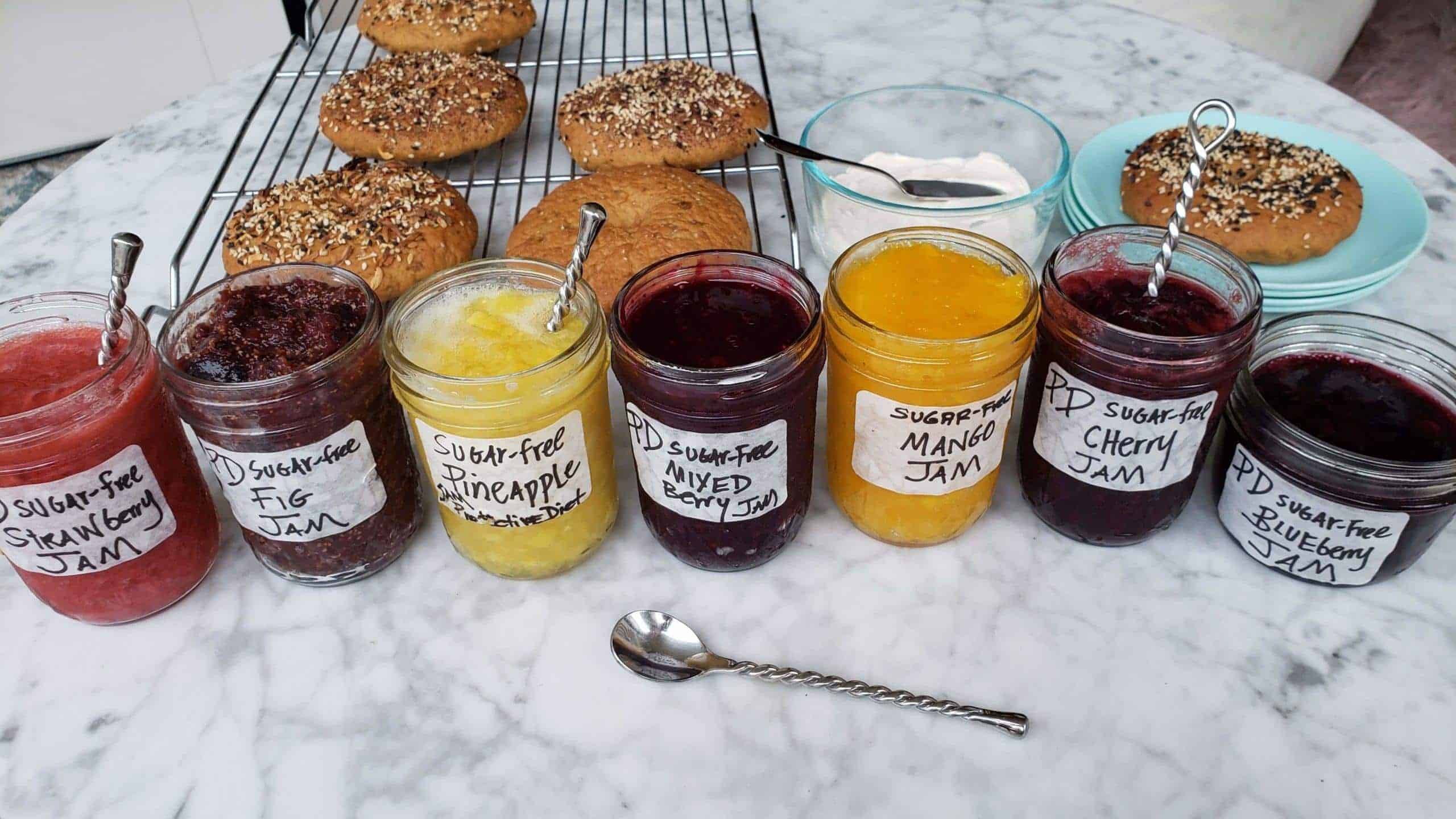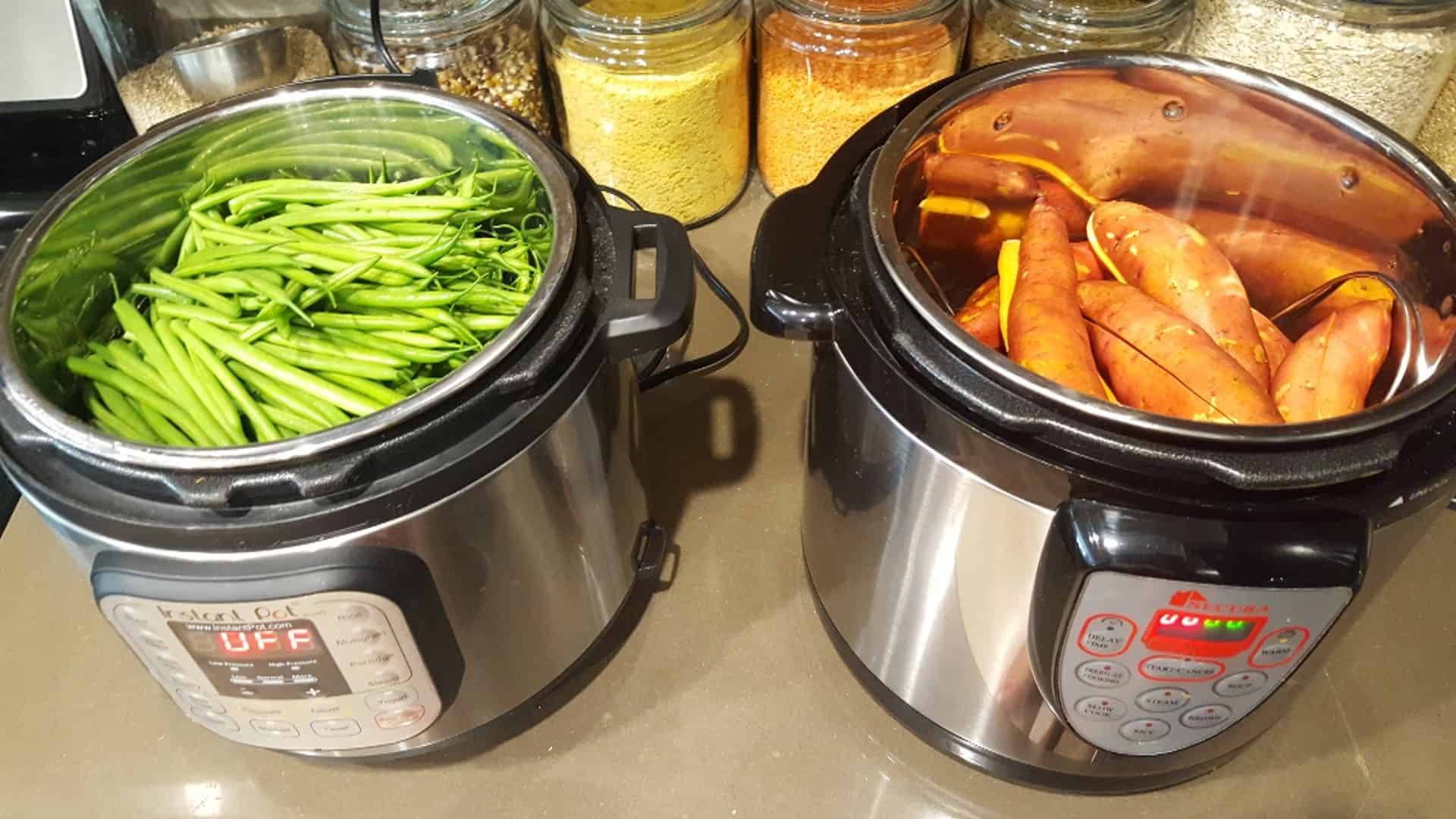Protective Diet Class #285 Notes:
This class broadens the palette and treats beneficial gut microbes with the bold flavor and plant diversity of kimchi. Traditionally made in large batches to preserve whole heads of cabbage through the winter months, this small-batch, bite-size, protective remake removes the intimidation, retains the crunch, and adds instant, unforgettable kimchi zest to meals from day one.
Announcements
- Engage in our official support group, Protective Diet Living (PDL). Join Live Chats & Coaching Hour for personal assistance.
- Shop www.protectivediet.com/bulk, an independent source for low-cost, high-quality PD staples in bulk.
- Order Protective Diet Plant-Based Broth Mix direct. Save w/free shipping and $5 off a 3-pack (no longer sold on Amazon).
Vocabulary
| Probiotics | Fermentation | Allium Family | Cruciferous | Sulforaphane |
| Chef’s Treats | Appetite | Plant Diversity | Phytochemical | Angiogenesis Inhibitor |
| Anti-inflammatory | Epithelium | Plant Fiber | Capsaicin | Short-Chained Fatty Acid |
Action Steps for Kimchi Day
- Goal: Preserve the Cabbage, Populate with Probiotics & Keep the Crunch
- Protective Diet’s small-batch, fast ferments retain their life and crispness while offering all the benefits of probiotics.

| Kimchi Day Rhythm | ||
| Day(s) Before | Gather Essential Ingredients: | Optional/Alternative Ingredients: |
| Additive-Free Salt White Whole Wheat Flour Korean Red Pepper Powder Plump Korean Moo Radish Fresh Pear | Napa Cabbage Carrot Green Onion Garlic Cloves Fresh Ginger Root | Coarse Korean Sea Salt (Asian Market) Sweet Rice Flour (Asian Market) Korean Pear or Asian Apple Pear Yulmu Radish Korean garlic chives |
| Morning Prep | Prepare cabbage according to all directions/notes in the Plant-Based Kimchi recipe and these tips: – Use a sharp chef knife, cutting board, and large bowl (a cooking pot or instant pot insert would work). – Remove sweet center leaves from each cabbage quarter. Do not soak. Chop & set aside for Geotjeori. – Be sure to chop cabbage into bite-size or larger pieces to retain crunch. Smaller pieces=softer kimchi. – Adjust salt measurement according to options in the recipe. Coarse salt=more, Fine salt=less. – Add tap water to cover salted cabbage, creating brine that will help the cabbage release its liquid. | |
| 6 Hours Later | Test cabbage for bendability. It should feel flexible and bend without cracking. Fermenting has begun. Rinse and drain cabbage 2 times in a salad spinner. Taste. Rinse again if it still tastes too salty. Spin dry. Make starch gravy in cold water. Whisk to prevent clumps/burning. Cook & cool to room temperature. Cut fresh vegetables into bite-size sticks–easy to handle w/chopsticks & sturdy enough to stay crunchy: – Korean “Moo” radish–slice into sticks. Store extra in cold, salted water for a crunchy side dish later. – Unpeeled carrot–slice into thin, deep angled slices. Julienne slices into thick matchsticks. – Green onion—wash and slice into 1-inch pieces, or use regular white or yellow onion thinly sliced. – Garlic cloves–Crush, peel and dice. Garlic pressed with the Suzy 2 garlic press will be too strong. – Unpeeled, fresh ginger root—Defrost, if frozen. Slice and cut into thin matchsticks. Dice finely. Combine gravy, seasonings & vegetables. Toss gently w/gloved hands. Add cabbage in batches and toss. Gently divide Kimchi into storage containers—jars or meal-sized stackable boxes are space-efficient. Lid and leave to ferment at room temperature for 24 hours. | |
| Dinner Prep | Enjoy a kimchi meal the same evening–called Geotjeori (ca-chi-ri). Toss reserved sweet inner cabbage leaves with residue left in kimchi prep bowl for a lightly seasoned, salad-like kimchi rice topper. Prepare Perfectly Cooked Brown Rice, adding an optional 1T. Broth Mix for extra flavor & protection. MEAL IDEA: Press hot rice into a rice bowl. Invert into a larger dinner bowl, creating a mound. Spoon older fermented kimchi around it (optional). Top generously with raw kimchi salad. Serve with Asian pear. | |
| 24 Hours Later | Transfer kimchi containers to the refrigerator to slow fermentation and retain freshness. | |
| 3 Days Later | Kimchi is fully populated w/probiotics that convert carbohydrates to lactic acid, intensifying tangy flavor. | |
| 6 Weeks Later | Kimchi starts to sour in taste. Vegetables continue to wilt and make a wonderful “sauce”. |
- Boost Immunity with Plant Fiber
- As your palette evolves, your goals will include the excitement of feeding interesting new fibers to your beneficial microbes.
- Populate beneficial gut microbes by eating fermented foods and keep them thriving by eating a variety of plant fibers.
- The epithelium, or gut lining, is a critical part of your immune system. If the epithelial wall is damaged, loose, or gapping, pathogens from food/air/surfaces can enter and spread viruses/bacteria/infectious diseases throughout the system.
- Provide your healthy microbes with a steady supply of dietary plant fiber. They digest it and produce short-chained fatty acids, which repair the gut lining, making it tight, impenetrable and naturally anti-inflammatory.
- Try a different variety of cabbage, lettuce, pear, etc. than you normally eat to increase the plant fiber diversity in your diet.
- Introduce a new vegetable into your diet. Make an adventure of finding a unique fruit or vegetable at the Asian Market.
- Chew on woody asparagus stems. Add radish leaves to your salad. Include banana peels in your banana bread.
- Leave the peel on carrots and ginger root. The additional plant fiber will boost your epithelium.
- In a single scoop, Plant-Based Kimchi packs the potential to raise the plant fiber diversity score by 10+ per meal.
Cooking Tips
- Use coarse Korean Sea Salt as a topping on Soft Pretzels or Pretzel Rolls or on anything that needs a heavy, non-melting salt.
- Daikon radish is very pungent when fermented. Julie prefers daikon fresh, sliced, and stored in saltwater, not in kimchi.
- Store daily-use pieces of fresh ginger and turmeric root in a container in the freezer door. Freeze a bulk backstock in a large bag.
- Garlic chives/garlic scapes/Korean garlic chives are flavorful. Just use a handful. Preserve them w/the Storing Herbs Technique.
- Use low sodium San’J Tamari in PD recipes. Soy Sauce/Coconut Aminos/Liquid Aminos contain additives, including msg.
- Use authentic, coarse, additive-free Korean Red Pepper Powder. The label should say–Ingredients: Red Pepper. Product of Korea.
- Reseal Korean Red Pepper Powder with packing tape and store in the freezer to retain color and freshness.
- Keep a small amount of Korean Red Pepper Powder in a repurposed spice jar for an easy access spicy sprinkle on anything.
- Wear gloves to protect skin and eyes when tossing kimchi. Do not touch your eyes. Wipe any spills with gloved hands to save your towels from staining. Wash gloved hands and use them to clean jar rims to prevent staining of your white jar lids.
- Always reference the written recipe over the class video for the latest guidance and ingredients.
Student Q&A
Q: What other starch (besides rice) is Plant-Based Kimchi served on? (8:00)
Q: How long does Plant-Based Kimchi last in the fridge? (1:26:10)
Encouragement
- Cancer-protective allium family vegetables, phytochemicals, capsaicin and angiogenesis inhibitors are included in PD recipes for your daily protection. I have taken care of this detail so you can eat and enjoy it without having to think about it.
- Take a field trip to the Asian Market. It’s always worth the trip. It’s a great way to learn about different cultures and foods.
“I don’t go out to eat anymore. I have fun exploring ethnic markets and creating new recipes using classic ingredients from other cultures. I plate them up beautifully and treat myself to special-looking food.”
Recommended Recipes
| Chocolate Chili Mousse | Kids Spaghetti | Preserved Lemons | Asian Style Kale |
| Yogi Bowl | Kimchi Pizza | Ruby Raw Kraut | Pro bowl |
Recommended Classes
| #041 Veggie Gardens | #228 Benefits of Fermented Food | #058 Improving Knife Skills |
| #243 Health Benefits of Spicy Food | #196 International Market Tour | #272 Allergies and the Microbiome |
This class broadens the palette and treats beneficial gut microbes with the bold flavor and plant diversity of kimchi. Traditionally made in large batches to preserve whole heads of cabbage through the winter months, this small-batch, bite-size, protective remake removes the intimidation, retains the crunch, and adds instant, unforgettable kimchi zest to meals from day one.
Class URL: https://protectivediet.com/courses/food-focus-plant-based-ethnic/lessons/class-285-protective-kimchi-101/







Responses